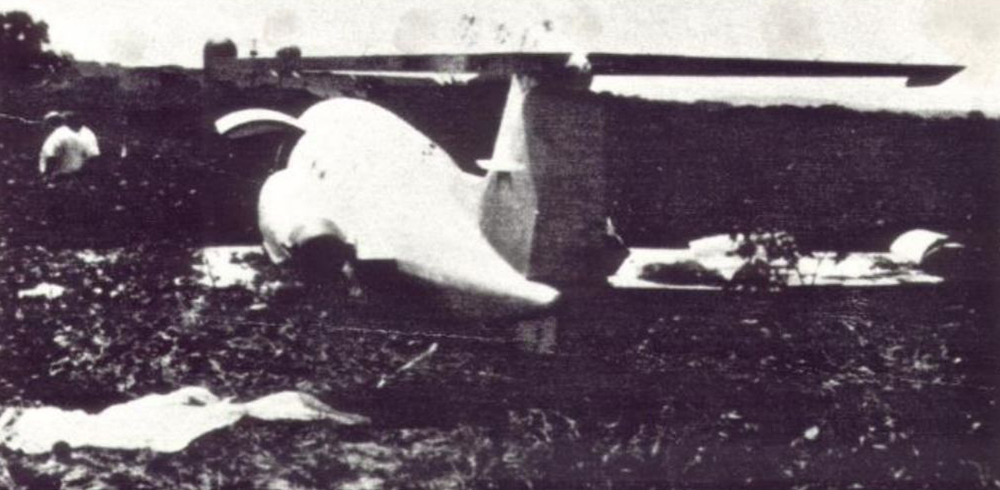Crash of a Learjet 35A in Morristown: 1 killed
Date & Time:
Jul 26, 1988 at 0740 LT
Registration:
N442NE
Survivors:
Yes
Schedule:
Allentown - Morristown
MSN:
35-442
YOM:
1981
Crew on board:
2
Crew fatalities:
Pax on board:
0
Pax fatalities:
Other fatalities:
Total fatalities:
1
Captain / Total hours on type:
2100.00
Aircraft flight hours:
4274
Circumstances:
The crew was positioning the aircraft in preparation for a revenue flight and executing a non-directional beacon (NDB) approach to runway 05. The captain reported that the copilot was flying the aircraft. However, the captain stated that he took control of the aircraft during the approach and made some control corrections before returning control of the aircraft to the copilot. Radar data indicated that aircraft control was erratic throughout the approach and that the airspeed and descent rates were high (3,000 fpm sink rate) shortly before the accident. The aircraft struck a fence short of the runway and impacted the ground. The captain said he realized the aircraft was drifting left of course but did not correct it. He said he told the copilot to add power twice during the approach. The copilot's training history indicated difficulty in control, scan of instruments, and with instrument procedures. Company management described the captain as passive and the copilot as aggressive. Supervision of training and operations by management and surveillance of the company by the FAA was considered inadequate by NTSB.
Probable cause:
Occurrence #1: loss of control - in flight
Phase of operation: approach - faf/outer marker to threshold (ifr)
Findings
1. (c) flight controls - improper use of - copilot/second pilot
2. Overconfidence in personal ability - copilot/second pilot
3. (f) inadequate recurrent training - copilot/second pilot
4. (f) inadequate surveillance of operation - faa (organization)
5. (f) airspeed - improper - copilot/second pilot
6. (f) proper descent rate - exceeded - copilot/second pilot
7. (c) supervision - inadequate - pilot in command
8. (f) interpersonal relations - pilot in command
9. Insufficient standards/requirements,airman - company/operator mgmt
----------
Occurrence #2: in flight collision with terrain/water
Phase of operation: approach - faf/outer marker to threshold (ifr)
Phase of operation: approach - faf/outer marker to threshold (ifr)
Findings
1. (c) flight controls - improper use of - copilot/second pilot
2. Overconfidence in personal ability - copilot/second pilot
3. (f) inadequate recurrent training - copilot/second pilot
4. (f) inadequate surveillance of operation - faa (organization)
5. (f) airspeed - improper - copilot/second pilot
6. (f) proper descent rate - exceeded - copilot/second pilot
7. (c) supervision - inadequate - pilot in command
8. (f) interpersonal relations - pilot in command
9. Insufficient standards/requirements,airman - company/operator mgmt
----------
Occurrence #2: in flight collision with terrain/water
Phase of operation: approach - faf/outer marker to threshold (ifr)
Final Report:
